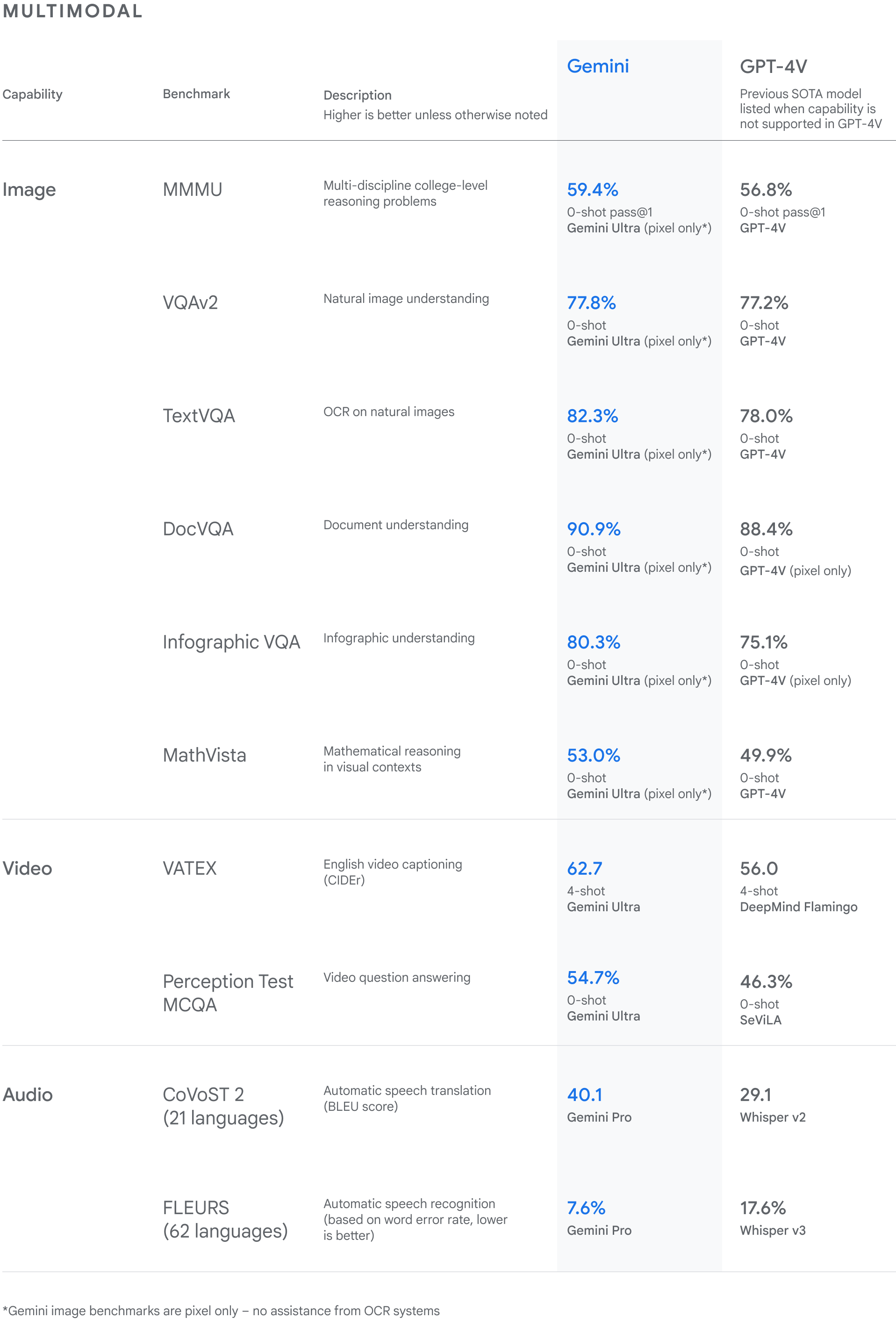Google has officially launched its highly anticipated next-generation AI system, Google Gemini, marking a significant leap in AI technology. The unveiling introduces Gemini in three variations Ultra, Pro, and Nano — each designed to revolutionize diverse aspects of language processing.
Key Points:
Google’s Gemini AI Launch: Google introduces its highly anticipated AI system, Gemini, in three variations – Ultra, Pro, and Nano, designed to redefine language processing capabilities.
Sundar Pichai’s Assertion: Google CEO Sundar Pichai hails Gemini as the company’s most significant science and engineering effort, marking a transformative leap in AI innovation.
Three Variants, Diverse Capabilities: Gemini’s Ultra, Pro, and Nano modes utilize varying sizes of language models (LLMs), hinting at the potential for local device operation with Nano.
Challenging Industry Dominance: Google aims to compete with AI giants like ChatGPT by OpenAI, emphasizing a desire to regain prominence in the AI landscape.
Exceeding Human Performance: Gemini’s Ultra variant outperforms human experts in Massive Multitask Language Understanding (MMLU) tests, showcasing its superiority in language-related tasks.
Features:
Pichai’s Vision: Sundar Pichai underscores the profound impact of AI, highlighting Gemini as a pivotal step in advancing scientific discovery and human progress.
Diverse Mode Capabilities: Ultra, Pro, and Nano modes offer varying levels of language model sizes, indicating potential applications in different technological landscapes.
Competing with ChatGPT: Google’s investment in Gemini aims to rival ChatGPT by OpenAI, signaling Google’s determination to lead in AI innovation.
Gemini’s Superiority: Gemini Ultra’s performance surpasses human experts in language understanding tasks, demonstrating its prowess in the field of AI.
Integration Across Google Services: Gemini’s integration into Bard, Google Pixel phones, and future plans for Search, Ads, Chrome, and Duet AI highlights its versatility and wide-ranging applications.
Multi-Modal Interaction: Gemini’s capability to interact via text, images, and audio paves the way for a diverse and interactive user experience across Google’s ecosystem.

Conclusion:
Google’s unveiling of Gemini AI marks a watershed moment in the realm of artificial intelligence, heralding a new era of innovation and transformative capabilities. Sundar Pichai’s assertion of Gemini as Google’s most significant scientific endeavor underscores its potential to redefine the landscape of AI technology.
Gemini’s introduction in three distinct modes — Ultra, Pro, and Nano — reflects Google’s commitment to diversifying its AI capabilities, positioning it to challenge industry stalwarts like ChatGPT by OpenAI. The performance superiority showcased by Gemini Ultra in language-related tasks, surpassing human benchmarks, underscores its immense potential in revolutionizing language processing and understanding.
As Gemini integrates seamlessly into Google’s ecosystem, its application spans across products and services, promising enhanced functionalities in Bard, Google Pixel phones, and future integration into Search, Ads, Chrome, and Duet AI. Its versatility in multi-modal interaction, accommodating text, images, and audio, lays the groundwork for a more interactive and immersive user experience.
The launch of Gemini AI represents a pivotal milestone in Google’s pursuit of AI innovation, heralding an age where technology converges with human understanding and interaction. With its diverse capabilities and ambitious vision, Gemini stands as a testament to Google’s commitment to pushing the boundaries of artificial intelligence, promising a future where AI seamlessly integrates into everyday life, transforming the way we interact, learn, and innovate.













































































































































































